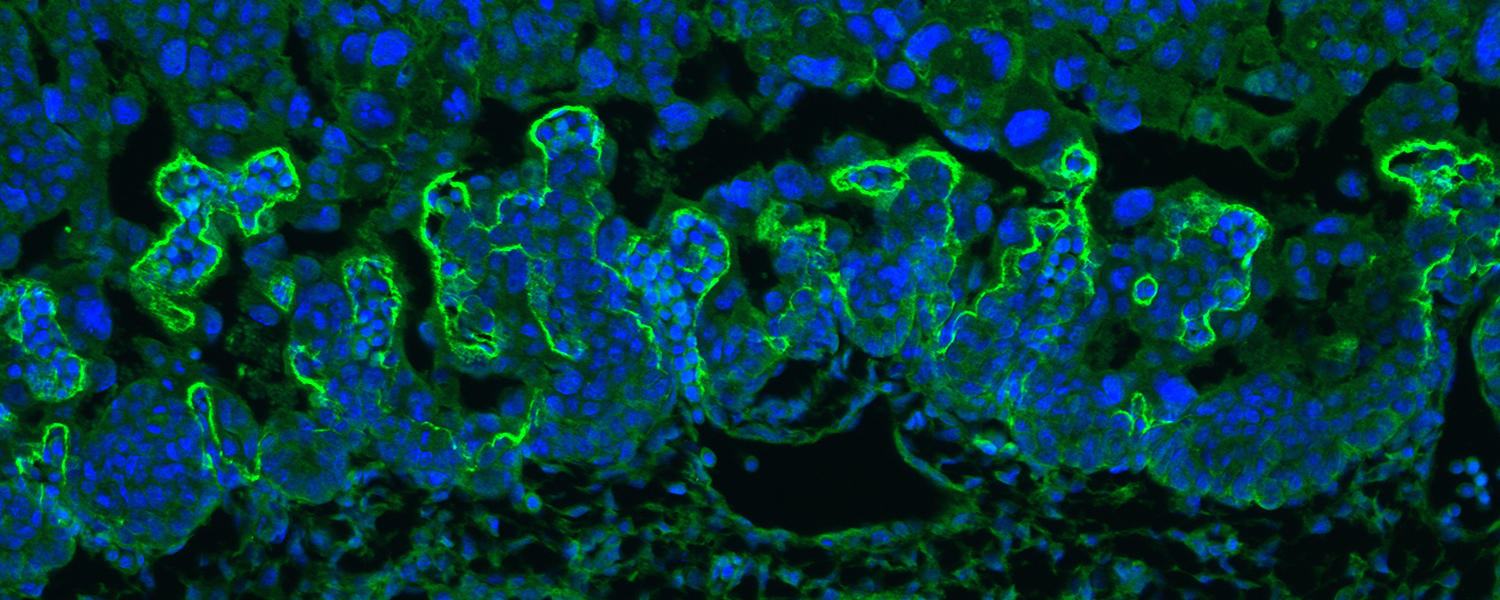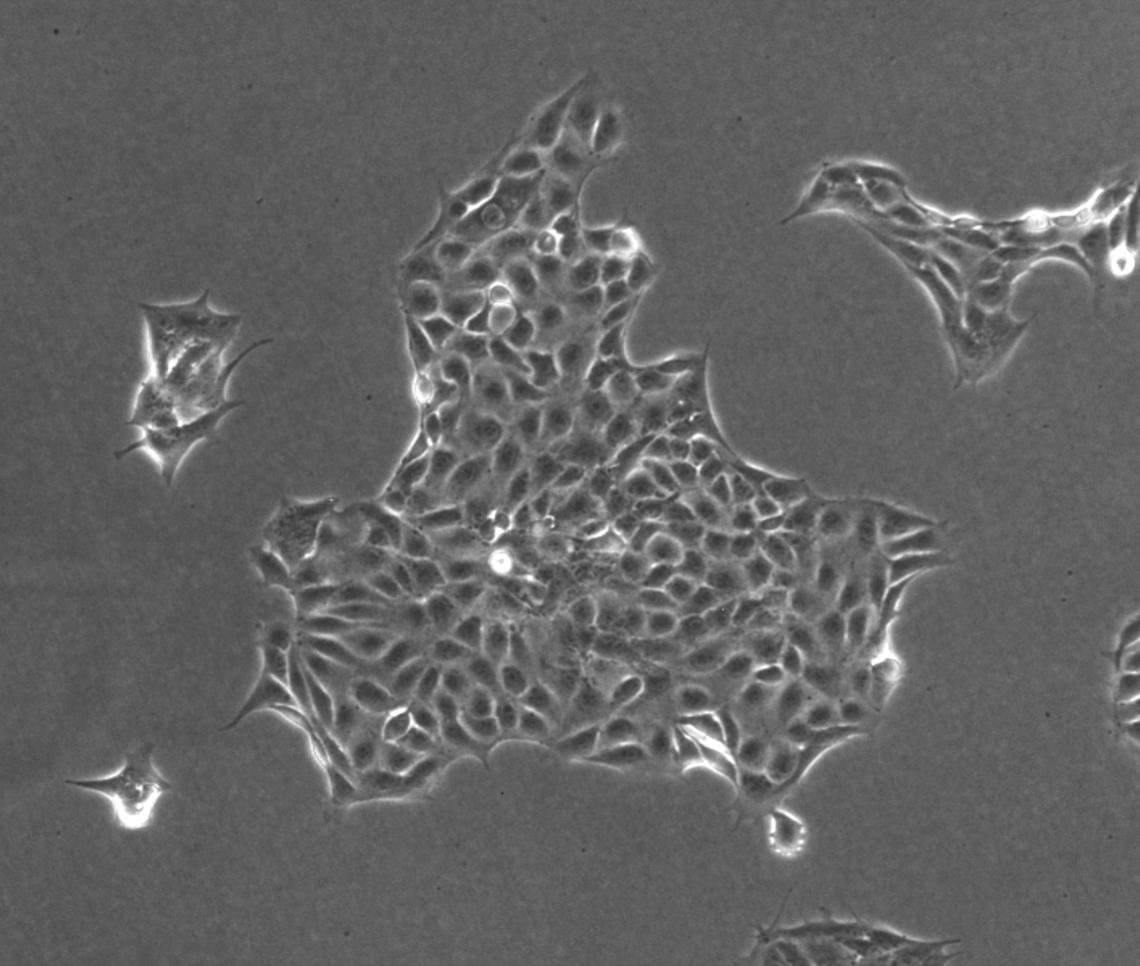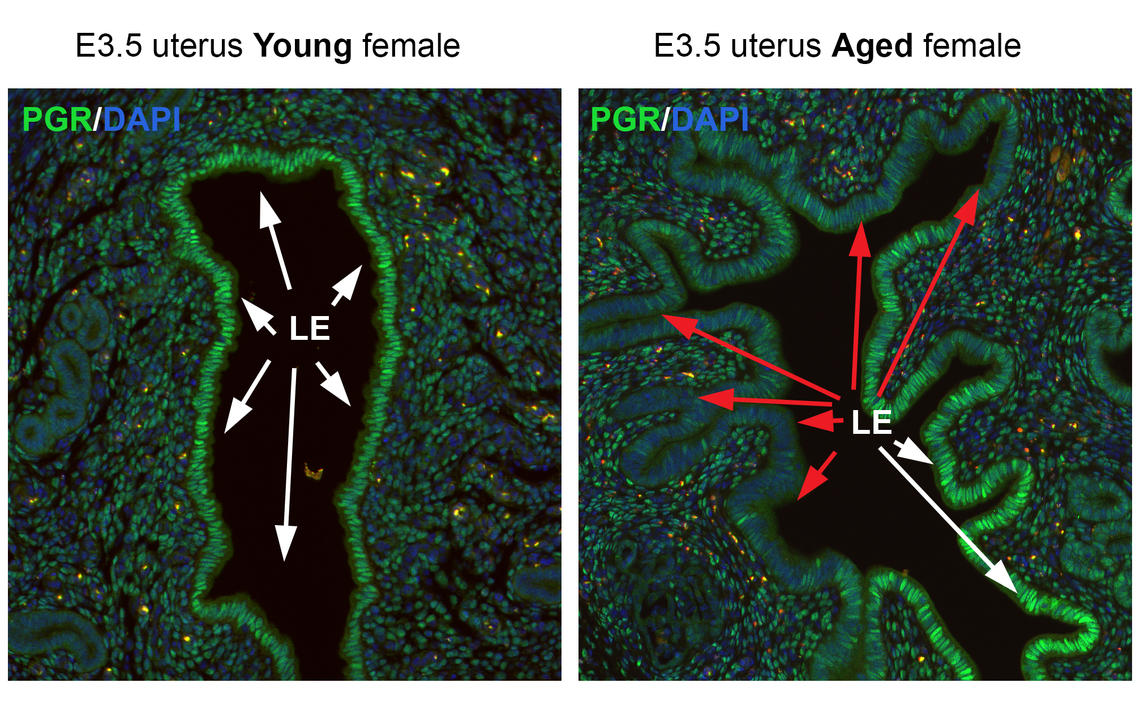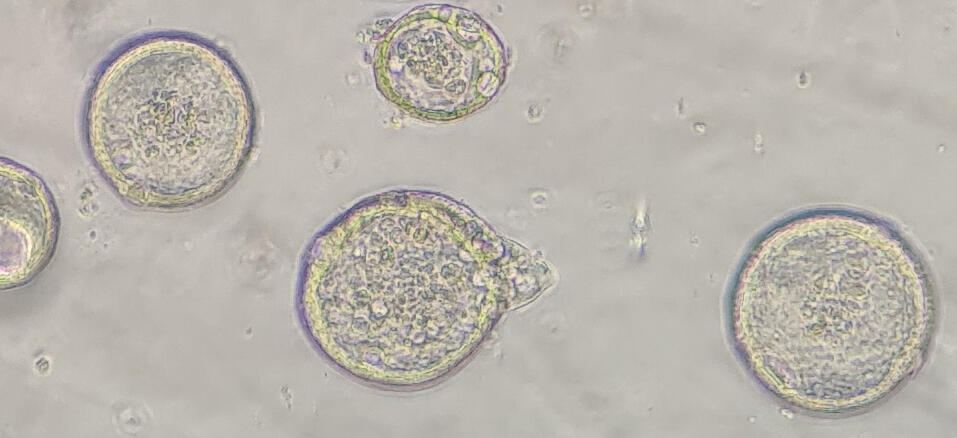
Placenta and Reproductive Health Research Group
Our research is aimed at gaining a better understanding of the molecular mechanisms underpinning development and function of the placenta.
Research Focus
Our research is aimed at gaining a better understanding of the molecular mechanisms underpinning development and function of the placenta. The placenta is the extra-embryonic organ that is critical to supply the growing fetus with nutrients and oxygen during gestation. It forms the interface where physiological and environmental influences can be transmitted from mother to baby including to its germ cells. As such, defects of the placenta are often at the root of common pregnancy complications such as pre-eclampsia, fetal growth restriction, preterm birth and stillbirth.
With limited treatment options available, pregnancy complications result in considerable maternal and infant mortality and morbidity, and can have long-lasting impact on disease predisposition for both mother and offspring. The precise causes of these pregnancy complications remain poorly understood. Thus, research in this area is of utmost relevance for improving population health through precision medicine.
Due to the juncture of three generations within pregnancy (mother, baby and baby’s germ cells), these conditions not only affect the immediate pregnancy and offspring, but also have the potential to influence the next generation. Preterm birth, in particular, is of mounting concern globally. Preterm birth rates have remained high and are rising year on year, with Calgary reporting some of the highest rates in Canada and North America. Moreover, it is also becoming increasingly clear that placental abnormalities can directly cause, or contribute to, very specific congenital defects, affecting in particular cardio-vascular and neuronal development.
Dr. Myriam Hemberger

Tier I Canada Research Chair in Developmental Genetics and Epigenetics

Fig. 1 Human trophoblast stem cells grown in 2D culture.
Specific Expertise
As part of the Cumming School of Medicine and the Alberta Children’s Hospital Research Institute (ACHRI), our group studies key aspects of placental and developmental biology in normal and pathological pregnancies. Our specific expertise resides in genetic and epigenetic approaches that will advance our understanding of how early cell fate decisions are brokered that may affect subsequent developmental progression.
Project Area 1
We build on recent breakthrough technologies that have enabled the derivation of human trophoblast stem cells (Fig. 1) to establish new, improved cell culture systems for modelling the earliest stages of pregnancy when key steps in placental development take place alongside lineage fate decisions in the embryo proper.
Project Area 2
A core area of work is to gain a broad and comprehensive understanding of the genetic and epigenetic requirements that underpin normal placentation.
Many genes still remain unknown for their contribution to placental development. A function in placentation can be revealed upon mutation of specific factors, such as the Nubpl gene shown in Fig. 2, which causes a complete absence of the nutrient exchange surface (stained in green) from the mutant placenta. This placental phenotype contributes to the embryonic lethality of this particular mouse mutant.
Moreover, conditional mouse knockout studies and phenotyping screens have revealed a close connection between placenta, brain and heart development. In some cases it has indeed been demonstrated that placental dysfunction can constitute the sole cause of cardiac defects. Similarly, recent large-scale phenotyping efforts of embryonic lethal or subviable mouse gene knockouts have shown a close co-association between the occurrence of placental defects and abnormalities in neural and cardio-vascular development.
Uncovering the mechanistic links between the placenta and the development of specific embryonic organ systems, notably the heart and brain, is another priority area of our work.

Fig. 2 Images of mouse mid-gestation embryos and placentas with a normal, wild-type (WT) genotype on the left and of those carrying a mutation (MUT) of a particular gene, Nubpl, on the right.

Fig. 3 Immunofluorescence staining of E3.5 uteri from young and aged females for Progesterone receptor (PGR). Note the patchy expression of PGR in the aged sample, indicated by the red arrows. Nuclear counterstaining is with DAPI.
For this purpose, we are using animal models as well as organoid culture models of endometrial epithelial (Fig. 4) as well as stromal cell components to study the impact of aging on cellular function within the female reproductive tract.
Project Area 3
Despite significant advances in obstetrics and placental biology, disorders of pregnancy still occur frequently, and are particularly prevalent in mothers of advanced maternal age. In mice, age-associated changes to uterine function have a profound impact on placentation and compromise fetal development independent of oocyte quality (Fig. 3). Our work focuses on elucidating the precise nature and mechanistic details of these age-related changes in uterine cells, and how they impact on cellular function during early pregnancy.

Fig. 4 Mouse endometrial epithelial organoids in culture.
Publication Highlights
- Hemberger M. and Dean W. (2023). The placenta: Epigenetic insights into trophoblast developmental models of a generation-bridging organ with long-lasting impact on lifelong health. Physiological Reviews.
- Radford B.N., Zhao X., Glazer T., Eaton M., Blackwell D., Lo Vercio L.D., Devine J., Shalom-Barak T., Hallgrimsson B., Cross J.C., Sucov H.M., Barak Y., Dean W. and Hemberger M. (2023). Defects in placental syncytiotrophoblast cells are a common cause of developmental heart disease. Nature Communications, 14: 1174.
- Andrews S., Krueger C., Hemberger M., Dean W., Perez-Garcia V. and Hanna C. (2023). Mechanisms and function of de novo DNA methylation in placental development reveals an essential role for DNMT3B. Nature Communications, 14: 371.
- Kokorudz C., Radford B.N., Dean W. and Hemberger M. (2023). Advanced maternal age differentially affects embryonic tissues with the most severe impact on the developing brain. Cells, 12: 76.
- Ballasy N.N., Bering E.A., Kokorudz C., Radford B.N., Zhao X., Dean W. and Hemberger M. (2022). Padi2/3 deficiency alters the epigenomic landscape and causes premature differentiation of mouse trophoblast stem cells. Cells, 11: 2466.
- Perez-Garcia V., Lea G., Lopez-Jimenez P., Okkenhaug H., Burton G.J., Moffett A., Turco M.Y. and Hemberger M. (2021). BAP1/ASXL complex modulation regulates Epithelial-Mesenchymal Transition during trophoblast differentiation and invasion. Elife, 10:e63254.
- Castillo-Fernandez J., Herrera-Puerta E., Demond H., Clark S.J., Hanna C.W., Hemberger M. and Kelsey G. (2020). Increased transcriptome variation and localised DNA methylation changes in oocytes from aged mice revealed by parallel single-cell analysis. Aging Cell, e13278. doi: 10.1111/acel.13278.
- Senner C.E., Chrysanthou S., Burge S., Lin H.Y., Branco M.R. and Hemberger M. (2020). TET1 and 5-Hydroxymethylation Preserve the Stem Cell State of Mouse Trophoblast. Stem Cell Reports, S2213-6711(20)30149-1. doi: 10.1016/j.stemcr.2020.04.009.
- Woods L., Morgan N., Zhao X., Dean W., Perez-Garcia V. and Hemberger M. (2020). Epigenetic changes occur at decidualisation genes as a function of reproductive ageing in mice. Development, 147:dev185629. doi: 10.1242/dev.185629.
- Hemberger M., Hanna C.W. and Dean W. (2019). Mechanisms of early placental development in mouse and humans. Nature Reviews Genetics, 21: 27-43. doi: 10.1038/s41576-019-0169-4.
- Lee C.Q.E., Bailey A., Lopez-Tello J., Sferruzzi-Perri A.N., Okkenhaug K., Moffett A., Rossant J. and Hemberger M. (2019). Inhibition of Phosphoinositide-3-kinase signaling promotes the stem cell state of trophoblast. Stem Cells, 37: 1307-1318. doi: 10.1002/stem.3052.
- Turco M.Y., Gardner L., Kay R., Hamilton R.S., Prater M., Hollinshead M., McWhinnie A., Esposito L., Fernando R., Skelton H., Reimann F., Gribble F., Sharkey A., Marsh S.G.E., O’Rahilly S., Hemberger M., Burton G.J. and Moffett A. (2018). Trophoblast organoids as a model for maternal-fetal interactions during human placentation. Nature, 564: 263-267.
- Woods L., Perez-Garcia V. and Hemberger M. (2018). Regulation of Placental Development and Its Impact on Fetal Growth-New Insights From Mouse Models. Frontiers in Endocrinology, 9: 570.
- Perez-Garcia V., Fineberg E., Wilson R., Murray A., Mazzeo C.I., Tudor C., Sienerth A., White J.K., Tuck E., Ryder E.J., Gleeson D., Siragher E., Wardle-Jones H., Staudt N., Wali N., Collins J., Geyer S., Busch-Nentwich E.M., Galli A., Smith J.C., Robertson E., Adams D.J., Weninger W.J., Mohun T. and Hemberger M. (2018). Placentation defects are highly prevalent in embryonic lethal mouse mutants. Nature, 555: 463-468.
- Woods L.*, Perez-Garcia V.*, Kieckbusch J., Wang X., DeMayo F., Colucci F. and Hemberger M. (2017). Decidualisation and placentation defects are a major cause of age-related reproductive decline. Nature Communications, 8: 352.
- Branco M.R., King M., Perez-Garcia V., Bogutz A.B., Caley M., Fineberg E., Lefebvre L., Cook S.J., Dean W., Hemberger M.* and Reik W.* (2016). Maternal DNA methylation regulates early trophoblast development. Developmental Cell, 36: 152–163. *Co-senior authors.
- Latos P.A., Sienerth A.R., Murray A., Senner C.E., Muto M., Ikawa M., Oxley D., Burge S., Cox B. and Hemberger M. (2015). Elf5-centered transcription factor hub controls trophoblast stem cell self-renewal and differentiation through stoichiometry-sensitive shifts in target gene networks. Genes & Development, 29: 2435-2448.
- Kubaczka C., Senner C.E., Cierlitza M., Araúzo-Bravo M.J., Kuckenberg P., Peitz M., Hemberger M. and Schorle H. (2015). Direct induction of trophoblast stem cells from murine fibroblasts. Cell Stem Cell, 17: 557-568.
- Latos P.A., Goncalves A., Oxley D., Mohammed H., Turro E. and Hemberger M. (2015). Fgf and Esrrb integrate epigenetic and transcriptional networks that regulate self-renewal of trophoblast stem cells. Nature Communications, 6: 7776.
- Cambuli F., Murray A., Dean, W., Dudzinska D., Krueger F., Andrews S., Senner C.E., Cook S.J. and Hemberger M. (2014). Epigenetic memory of the first cell fate decision prevents complete ES cell reprogramming into trophoblast. Nature Communications, 5: 5538.
- Senner C.E., Krueger F., Oxley D., Andrews S. and Hemberger M. (2012). DNA methylation profiles define stem cell identity and reveal a tight embryonic-extraembryonic lineage boundary. Stem Cells, 30: 2732-2745.
- Hemberger M., Dean W. and Reik W. (2009). Epigenetic dynamics of stem cells and cell lineage commitment: digging Waddington’s canal. Nature Reviews Mol. Cell Biology, 10: 526-537.
- Ng R.K., Dean W., Dawson C., Lucifero D., Madeja Z., Reik W. and Hemberger M. (2008). Epigenetic restriction of embryonic cell lineage fate by methylation of Elf5. Nature Cell Biology, 10: 1280-1290.
Placenta and Reproductive Health Research Group

